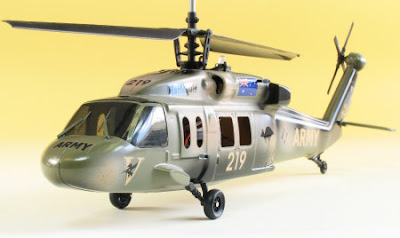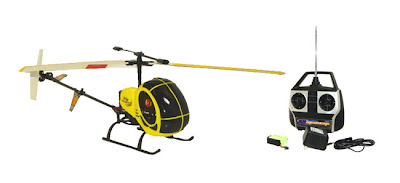It gives a lot of accomplishment feeling when you plan, create, machine and build a scale rc helicopter from zero. When you complete building it and everything fits together to give the right look and feel, the happiness you get from it is just immense.
The larger the size of the scale rc helicopter the more realistic it will feel and look but the cost involved will increase in proportion to its size. Scale rc helis can come in 1/30th to ¼ scale sizes, you can choose the size according to your budget. Good scale rc helicopters are made and designed not only to look like actual helicopters but to perform, sound and fly like the real ones too.
There are numerous competitions around the world that are arranged to judge the most closely resembled scale rc helicopter. The professional scale helicopter modelers go to every detail of not only the outside of the heli but all the minor details of inside of the cockpit as well.

Building a scale rc helicopter can e as simple as buying a kit or it can be as difficult as creating everything from scratch which includes planning and designing. However, if your aim is to fly a scale model helicopter, your best bet is to learn it on Pod and Boom helicopter.
A pod and Boom helicopter is consists of a Pod in the front which encapsulates the machinery of the helicopter. At the rear end of the Pod extends a long tube pipe which usually made up of aluminum, called Boom. The Boom holds the tail rotor of the helicopter.
So, the Pod and Boom helicopter is the basic helicopter design which serves as the base for a scale rc helicopter. Scale Remote Control Helicopter is nothing but a Pod and Boom heli covered in a scale fuselage.
You must have understood by now that the right way to build and fly a scale rc helicopter is to first fly a Pod and Boom Helicopter but still I give you the main reasons to chose them as your first basic learning choice:

-It becomes very simple to put a scale fuselage on the pod and boom model once you understand the mechanics of it. If you try put together the scale helicopter fuselage in the beginning, the whole process becomes complicated and frustrating. Because you will be required to make some dynamic and static adjustments to your scale model after it is built and when you try flying it the first time. Understanding the ins and outs of the pod and boom basic model makes the whole process understandable to you to the extent that you can do all that adjustments easily.
-Good quality large fiber glass fuselage do not come cheap, in fact a good one can cost you more than the pod and boom kit. You crash your scale fuselage in your first flight and nothing is more disheartening than this because even a small crash will make it useless.
- You need to have a Pod and Boom basic model helicopter in any case even if yu want to fly a scale model, so why not clean your hands on the basic model, understand its mechanics and then buy a scale model fuselage to fix it on the pod and boom model. This is the right way of doing it.
The important thing in deciding which pod and boom rc helicopter kit to buy is that you must make sure that the fuselage of the scale rc helicopter you want can get fixed on the rc helicopter kit you are buying.
If you want to become an aerobatic rc helicopter pilot than scale rc helicopter models are not the choice for you, because the fuselage adds extra weight on the basic model and that is a hurdle in making advanced aerobatic maneuvers.

The choice of material is also a point to consider when buying. The best remote control fuselage and pod covers are made from under mentioned materials:
Carbon Fiber is much expensive material used to make fuselage and pod covers and that is why it is not usually used. However it is the lightest and strongest material. We have seen the price of carbon fiber to come down in recent years which makes it certain that it will be used in making fuselage and pod covers commonly. Be careful in grinding and repairing a fuselage made up of carbon fiber because its dust can cause severe lung infections.
Fiber Glass is the best material for making large rc helicopter fuselages. It is more expensive than other materials used and also is heavier. Cold weather and vibration tolerance is good in fiberglass and it is also easy to make it look like new after little damage.
Polystyrene is used for building mini rc helicopters. It is cheap but provides good cover for small and light rc helicopters.
Polycarbonate is also a light and inexpensive material but used for small rc helicopters. Cold temperatures make polycarbonate brittle in nature that’s why it is not advisable to fly them in winters.
